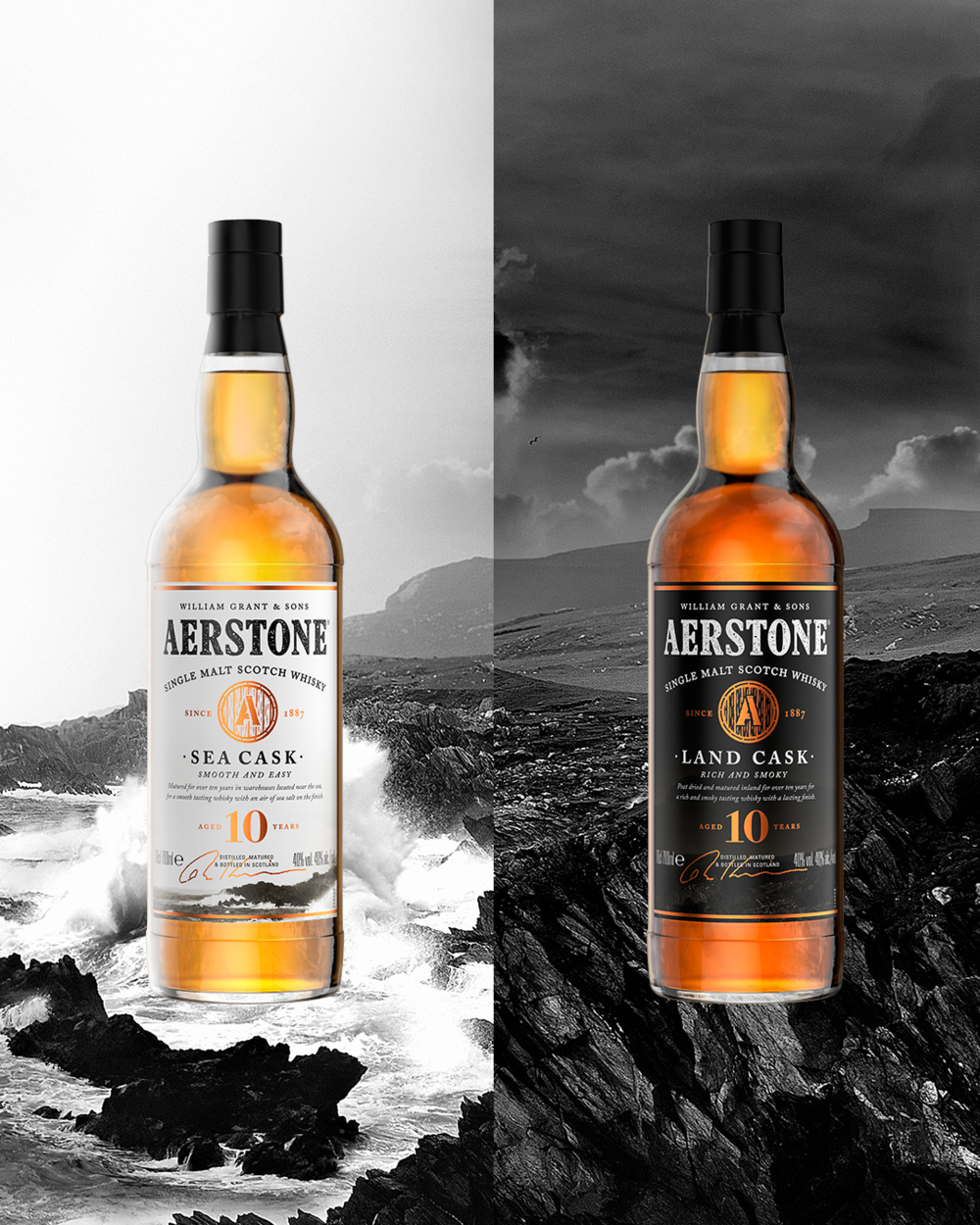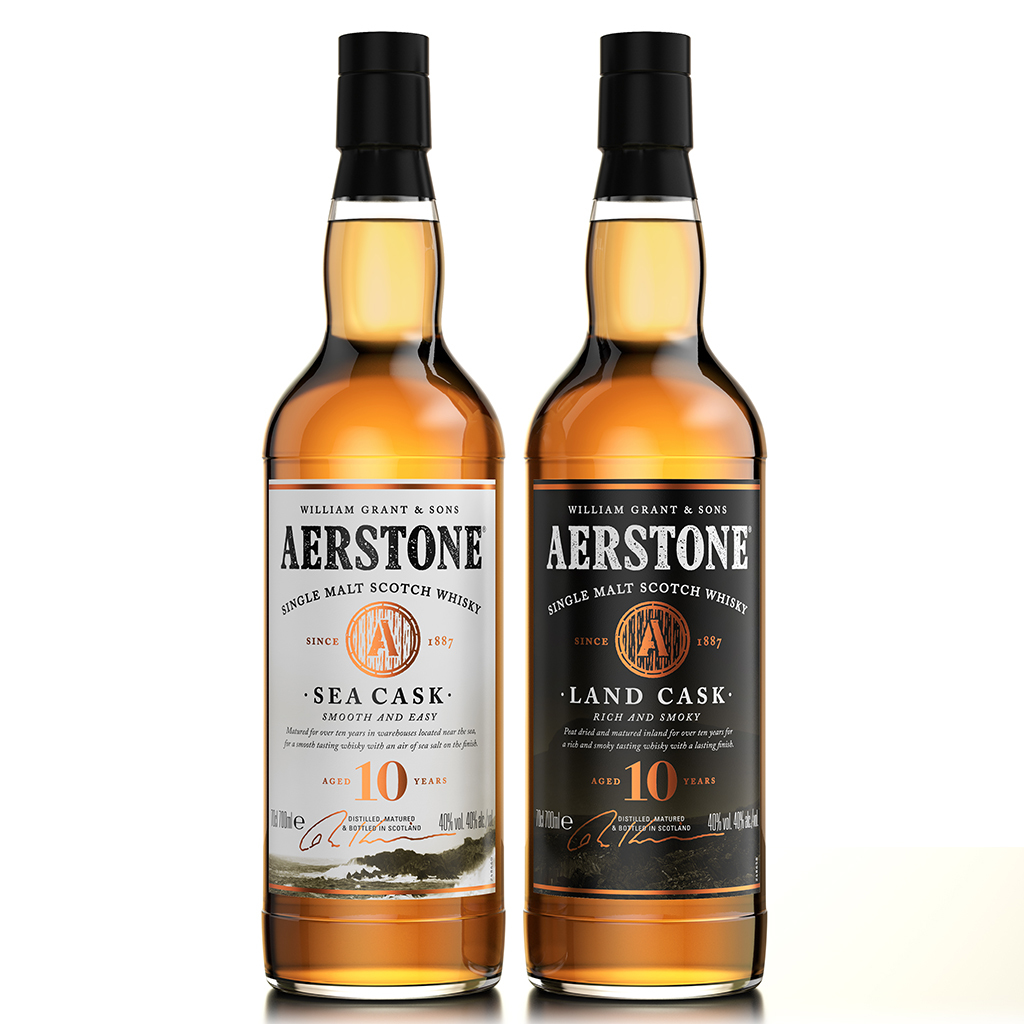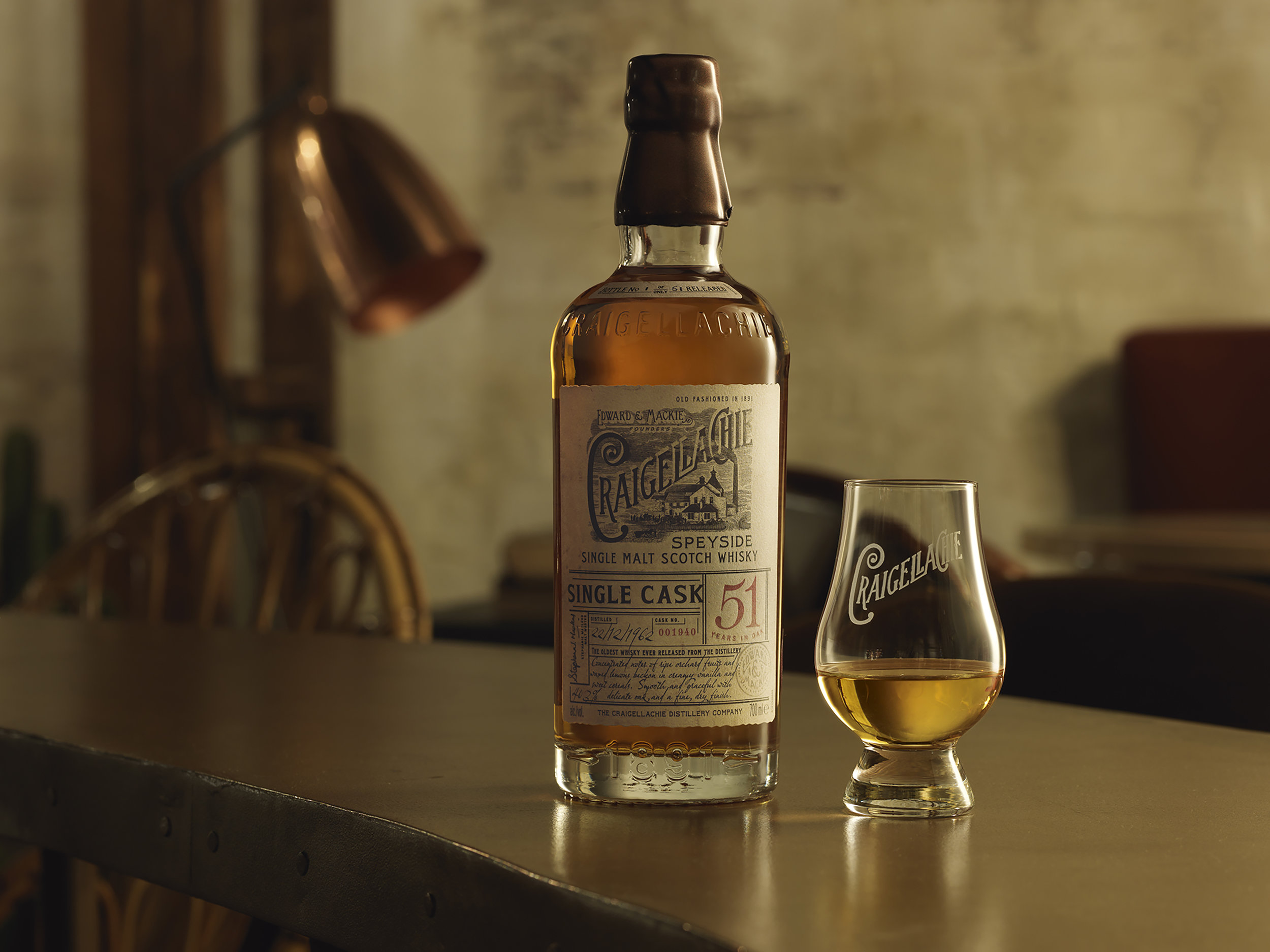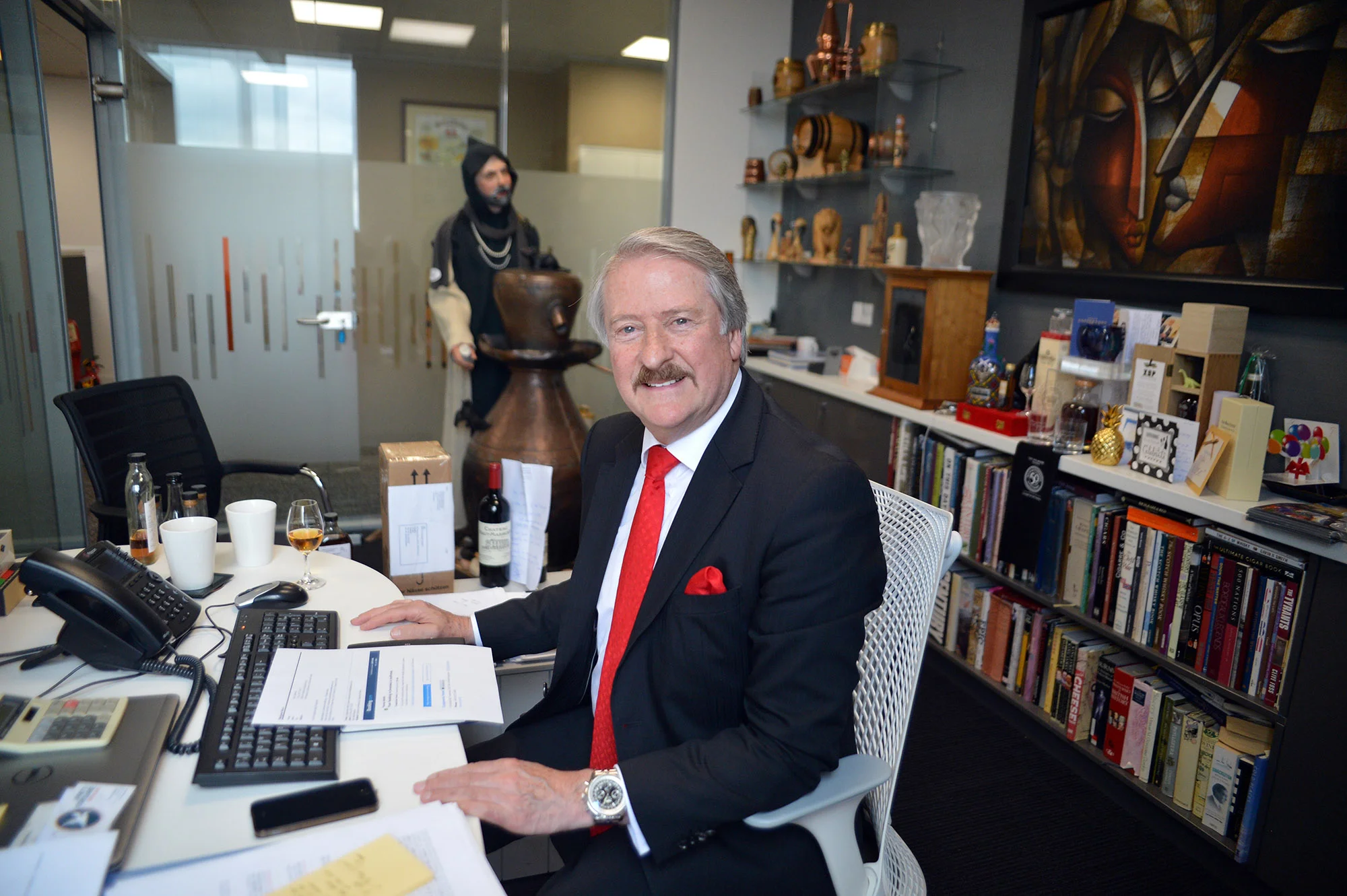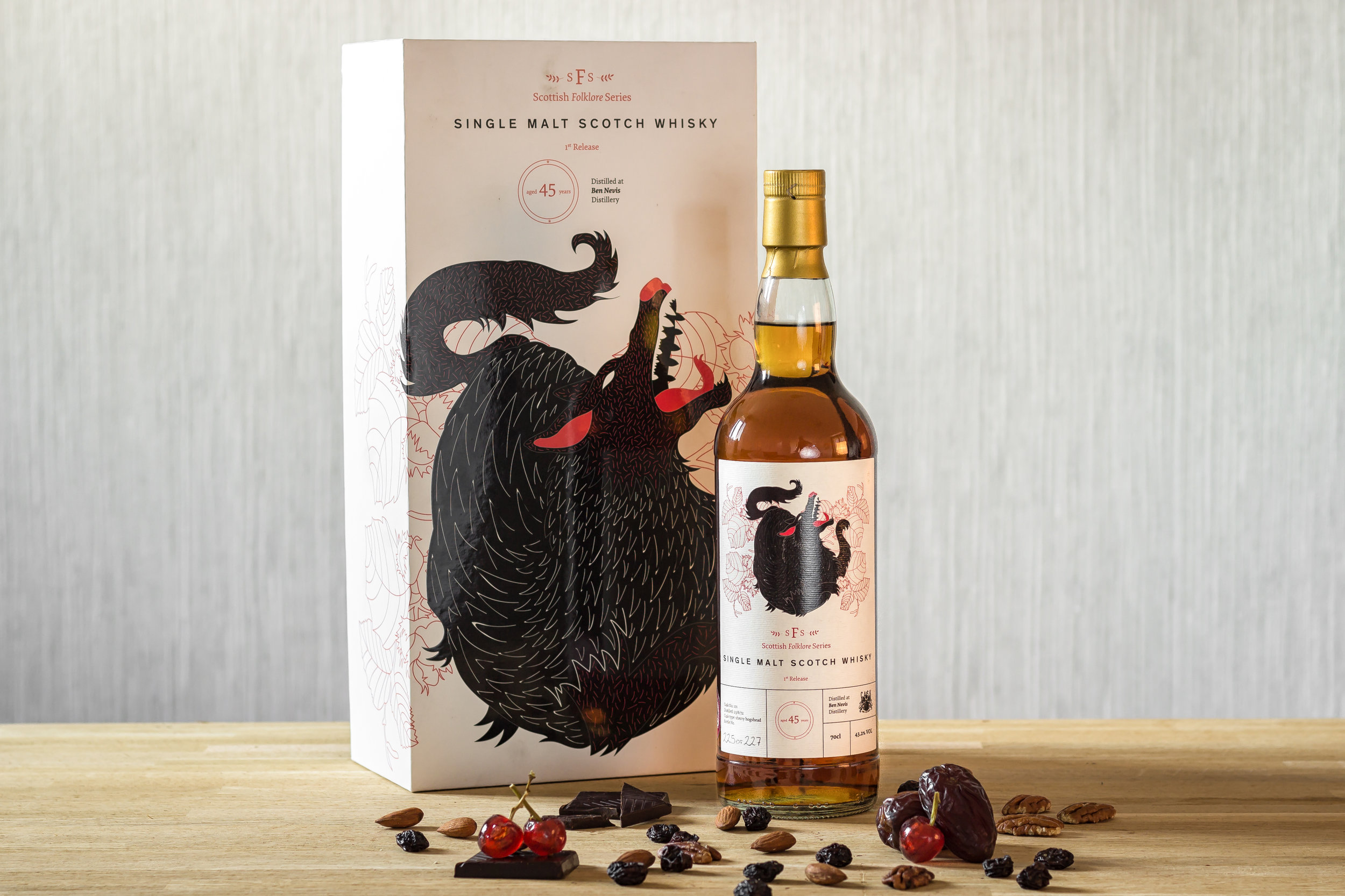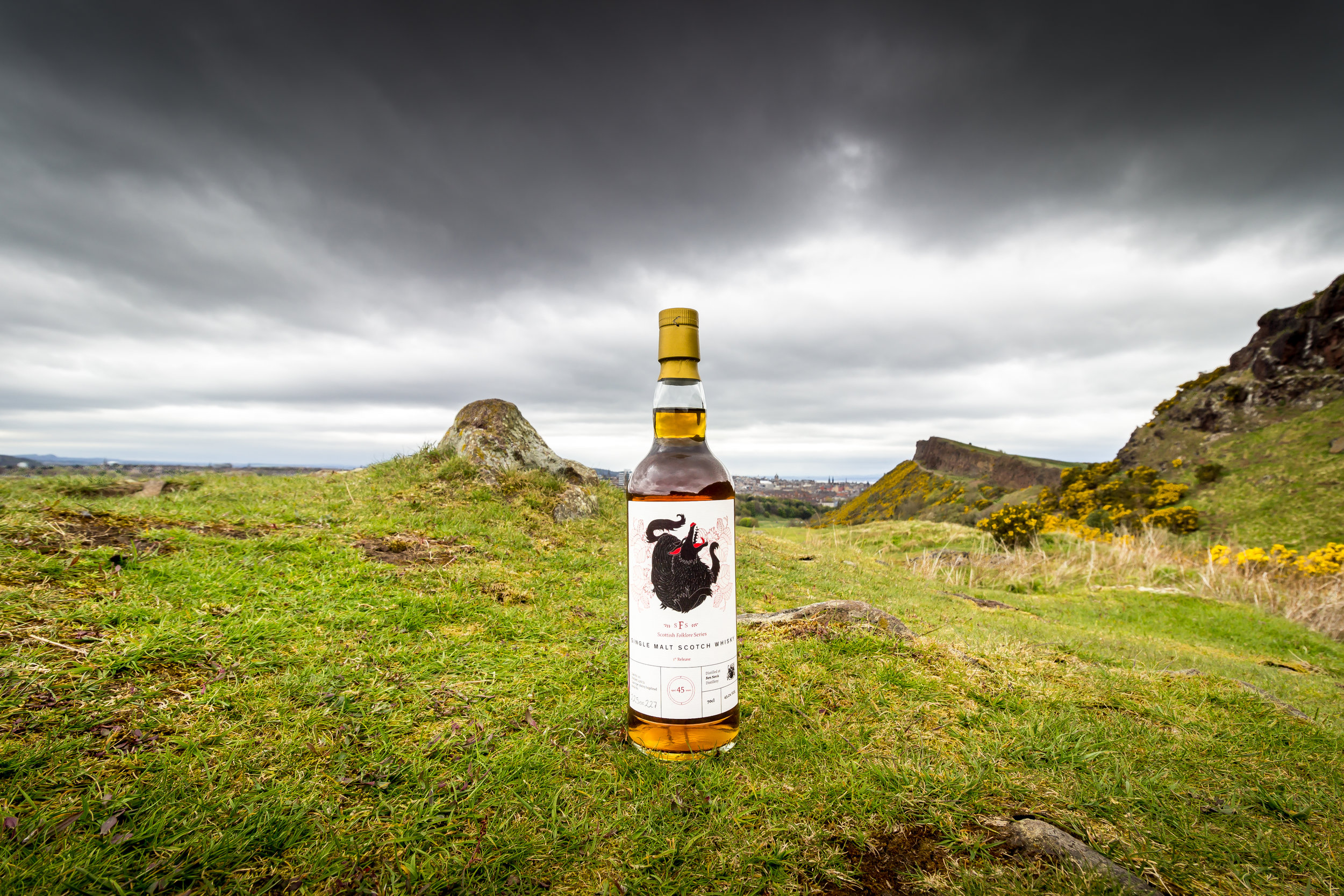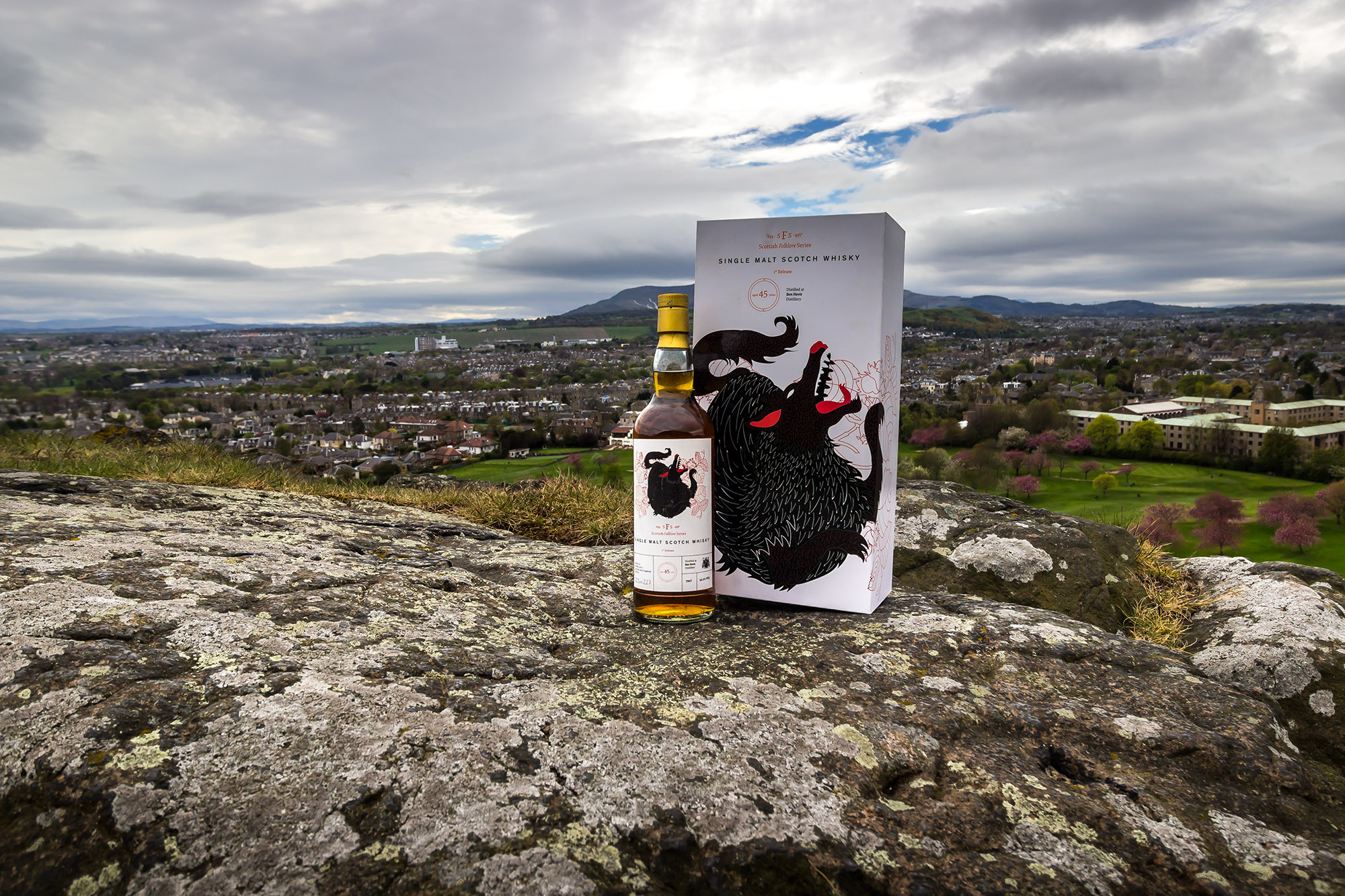Colin Hampden-White talks to the whisky blending legend that is Richard Paterson.
There are very few people within the whisky industry who travel quite as much as Richard Paterson. He is amongst a small collective of Scottish whisky people who are at the forefront of promoting Scotch, the brands of Whyte and Mackay and, in particular, The Dalmore. To do that job day in, day out, takes resilience, tenacity and above all the ability to be absolutely delightful to everyone all of the time. These skills seem to come naturally to Richard. He seems to thrive off people’s pleasure, revel in their gain of knowledge and be continuously excited by other’s discovery of flavour. He is a natural brand ambassador. However, this is not Richard’s primary role at Whyte and Mackay. He may fulfil that role in the public’s eye, but he has just as important things to do behind the scenes. First and foremost, Richard keeps all the brands he looks after consistent in flavour and, with many of them is still trying to improve them. Richard is the Master Blender at Whyte and Mackay and it’s been quite a journey to get there.
Richard was born on the 31st of January 1949. A few of us may know something of past events that have taken place on that day and, if in doubt, Richard with his love of history will be able to tell you that both Guy Fawkes and Bonnie Prince Charlie both died on that same day. Richard has an incredible memory for dates, especially of historical figures, some well-known and some not, who have been born, died or done something noteworthy at certain moments. This knowledge allows Richard to enrich the stories he tells surrounding whisky with what was happening in the wider world, putting Scotch into historical context. This ability is not only charming, but makes Richard’s stories all the more engaging, entertaining and educational all at once. He is one heck of a story teller, who happens to be one heck of a blender, hence his nickname “the nose”.
Richard started his working life in whisky aged 17 in September 1966. Richard was hired by the Managing Director of A Gillies and Co, on their first meeting at interview. He was so taken aback to be hired so quickly that when asked the question “Can you start on Monday”, he didn’t have time to think about his answer. So Richard started on that Monday the 5th of September 1966 as an office junior. Hence this is Richards’s 50th year in the Scotch whisky industry, and there has been plenty of water under the bridge, much of it made into whisky, since then.
When Richard joined A Gillies and Co, the whisky industry was enjoying a boom. Indeed, nineteen distilleries opened during that period are still going today. This was a great time for a young man to join the industry. Richard’s first boss was Tom Wilson, whose responsibility was the acquisition of whisky stocks through distilling, broking and blending. Part of Richard’s job was to record all the transactions. With no computers, this was all done painstakingly by fountain pen in ledgers dating back to the Victorian era.
Richard recalls his years at A Gillies and Co with a great deal of affection. He remembers it being incredibly relaxed in the whisky industry in those days, with people turning up for work well after nine in the morning and finishing promptly at five. There were no office politics and the odd hang-over on a Monday morning could be sustained. This wasn’t to say people didn’t take their jobs seriously, they certainly did, and taught Richard a great deal about various aspects of the business. Along with the serious side of whisky, there quite a bit of hilarity. Richard recalls “the Cowboy” game. Lots were drawn first thing in the morning and a Cowboy was chosen. He would then have to walk down the corridor, kick open the door as if it were a saloon, and down one of three glasses of clear liquid on a desk, much like playing roulette, two if the glasses contained water and the third new make spirit, which although not an actual bullet, Richard remembers the lethal effect of the 68% spirit. Needless to say, some days were a blur and he needed to stay out of the way of Tom Wilson and Mr Wolfe.
In those profitable days, the small companies such as A Gillies and Co had to live for the moment. Little time was spent marrying whisky. Richard puts it as “more of a passionate affair than a marriage”, but they did what was needed to get on. A similarly casual attitude was taken with casks. Spirits was filled into anything. The attitude was that a cask was a cask and whatever the previous contents had been, it really didn’t matter, be that Sherry, wine or even liqueur. This was acceptable practice in those days.
After Richard had been in Glasgow for long enough to have learnt the ropes, Tom Wilson asked if he had ever been to Campbeltown. Richard said he hadn’t, and so Tom said he was to go. To many, Campbeltown was the back of beyond. Only sixty five miles as the crow flies, it is one hundred and forty miles by road, and takes nearly four hours on a rickety bus on terrible road surfaces.
After a long night in the pub, Richard met the warehouse men and on his first day was introduced to blending. A blend was made during his first few days and the casks used logged in a leather ledger. The number placed on the cask heads, Richard remembers to this day. It was 69/4, meaning the fourth blend made at Glebe Street in 1969. During his time in Cambeltown, Richard studied these ledgers. They held the history of the blends made in the past and extended his knowledge.
A week later, Richard was introduced to Glen Scotia, a distillery owned by A Gillies and Co. Although Richard came from a whisky industry family, he had never visited a distillery before.
Richard learnt a huge amount in Cambeltown, on all sides of the whisky making process from the spirit to the blend. By the time he came to leave he had decided that his future lay beyond A Gillies and Co in a larger company, and that company was Whyte and Mackay.
Whyte and Mackay had, through the years since its conception, built itself up to be the fifth largest blend in the world by the mid-1960s and this position had been retained by the time Richard joined them in 1970.
Whyte and Mackay have their roots dating back to 1844, but really got going when James Whyte and Charles Mackay joined Allan & Poynter in 1875. In 1881 they bought the wines and spirits part of the business and having not secured the use of the company name started Whyte and Mackay.
